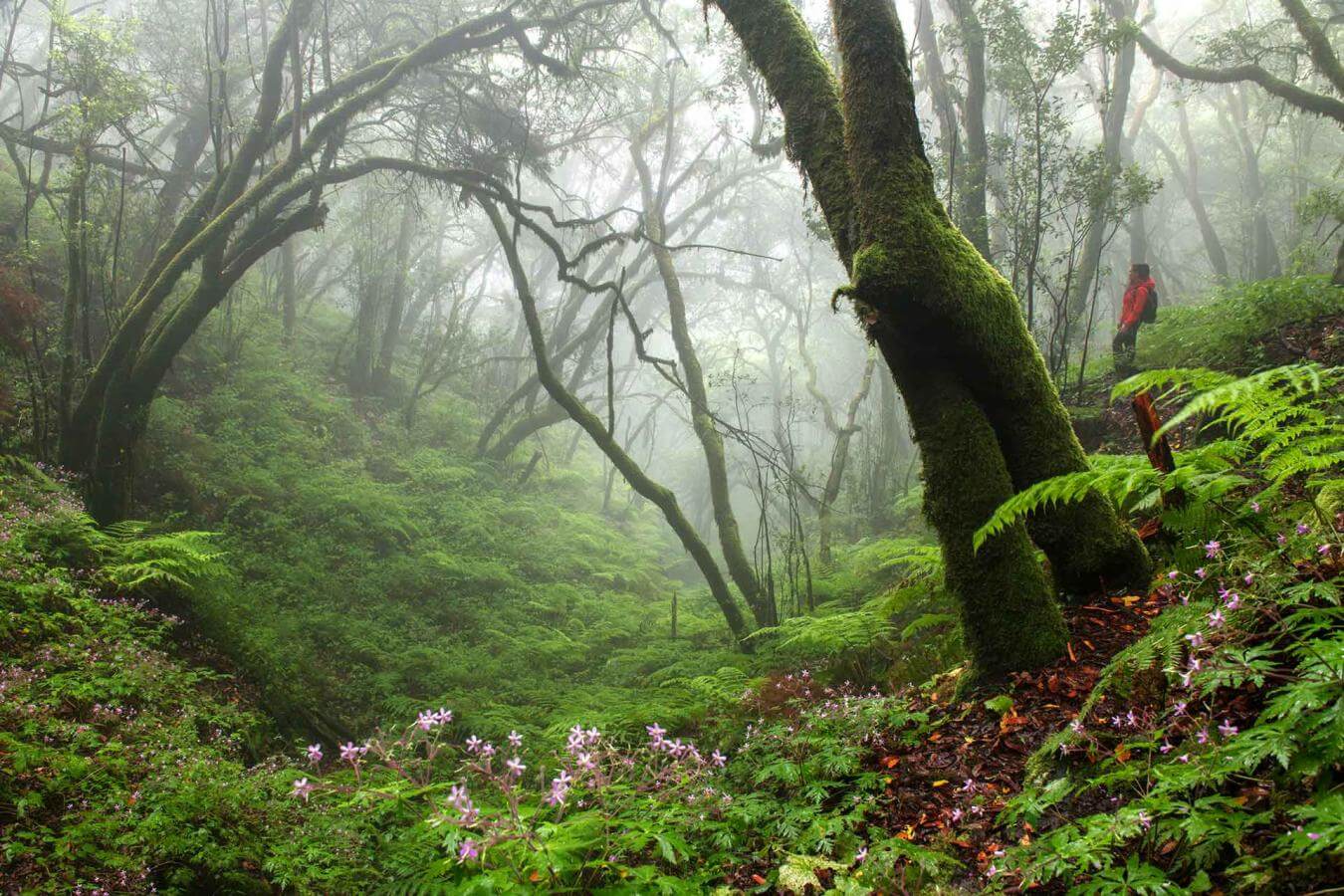Visiting the island of La Palma means getting in touch with purest nature thanks to its imposing volcanoes, its deep forests and starry sky, one of the clearest in Europe. From the small plants near the sea, capable of resisting the sun and salt, to the colorful flowers of the highest peaks, passing through its "Jurassic" vegetation, the whole island is an open-air encyclopedia that has earned it recognition as a World Biosphere Reserve, and that will allow visitors to enjoy first-hand the strength and beauty of nature.
Protected Natural Areas
With exceptional landscape values, including native fauna and flora, La Palma has abundant protected natural spaces such as Caldera de Taburiente National Park. The center of the island is an impressive cleft of approximately 8km in diameter and up to 1km and a half deep of volcanic origin, whose deep ravines and lush pine forest are surrounded by spectacular waterfalls and waterfalls.
In addition to the Caldera de Taburiente, El Cumbre Vieja Natural Park extends from the center to the south of the island of La Palma. In the park you can observe the volcanological history of the island, from prehistoric eruptions to the most current ones, an authentic walk through the bowels of the earth.
Las Nieves Natural Park, between the municipalities of Puntallana, San Andrés and Sauces and Santa Cruz de La Palma, is home to one of the best preserved laurel forests in the archipelago, the Tilos. This ecosystem, inherited from the Tertiary period, has survived almost intact, which gives it extraordinary value.






Land of Volcanoes
La Palma also stands out for being a land of volcanoes. Its geography, which offers the visitor the opportunity to explore this natural phenomenon closely in a safe way, concentrates most of the volcanoes in the area of Cumbre Vieja. This extensive elevation located to the south of the island is recognized as the most active and best preserved of the entire Canary archipelago, and also marks the beginning of the famous Route of the Volcanoes, which invites visitors to tour these imposing colossi that emerged from the depths of the Earth.
This trail, which begins at the Refugio del Pilar and reaches Fuencaliente, where the Teneguía volcano , is located , allows you to travel more than 18km through craters, lava lakes and vegetation.
But in La Palma it is also possible to contemplate a new volcano, as a result of the eruption that took place in 2021, in the area ofCabeza de Vaca (in Cumbre Vieja). Visiting the vicinity of the volcano's cone, with authorized companies, driving through open roads through lava flows or contemplating the fajanas that the lava left behind in the sea are just some of the experiences available to the visitor, who will undoubtedly be impacted by this extraordinary force of nature.

Marine Reserve
But if the surface of La Palma will leave the visitor breathless, discovering what is hidden in its waters is no less spectacular. With a seascape full of paths, crevices, arches, towers and underwater caves, diving enthusiasts can enjoy this sport in places like the Cancajos, Tazacorte or Fuencaliente.
The crystal clear and pure waters of La Palma are also home to a rich diversity of marine life. A coastal strip of the island was declared a Marine Reserve to preserve these ecosystems since 2001. This reserve reaches a depth of 1000m and extends over 3,455 hectares on the southwestern coast of the island of La Palma.
Among the species that can be found in this Reserve are the Canarian lobster, las viejas, salemas, greater amberjack, sea turtles and the bottlenose dolphin. .






